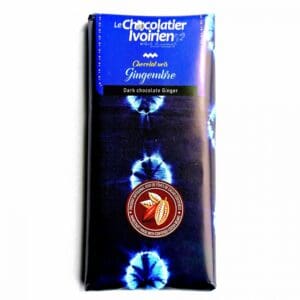
Selling products on an online marketplace requires more than just offering nice things. In fact, the product’s SEO is arguably just as (if not more) important than what you’re actually selling.
Here at Wakuda, we’ve designed our marketplace to get your products seen by more people. But to achieve this, you need engaging titles and product descriptions.
To help you understand the topic better, we’ve put together this guide on the importance of product titles on marketplaces. We’ve given our 3 tips to write product descriptions that sell. This information will help you increase sales and is relevant no matter the ecommerce platform you use.
Why are Product Descriptions and Titles Important?
It’s no secret that online marketplaces are very visual spaces. Getting your photography right is vital for high conversion rates, but so is an engaging product title and description.
You might be surprised to learn that 20% of all purchase failures are due to missing or confusing product descriptions. On the flipside, clear and engaging product descriptions improve conversion by up to 78%.
In short, product descriptions and titles are important for telling potential customers exactly what your product is. Also, both help with your product SEO. After all, a clearly described product will show up in the right searches, which is bound to increase sales.
Along with pictures, product titles on marketplaces are the first thing potential customers see. They make a split-second judgement about whether the product is right for them before even clicking through. So, your title should be clear, engaging, and appropriate for what you’re trying to sell.
Choosing the Right Titles and Product Descriptions
Product titles and descriptions require slightly different writing practices, but they also share many similarities. But these similarities mainly boil down to good SEO practice: clear, engaging wording that answers questions.
Let’s start with product titles.
A product title should, obviously, state what the product is. It should ideally be short and concise and should include relevant keywords.
For example, if you’re selling a lemon and honey lip balm, there’s not much more you need to put in the title than that.
Keeping the title short ensures it’ll show up on marketplace searches. If you only get a small amount of space, you don’t want your title disappearing off-screen because potential buyers will miss important information.
The key points to choosing good product titles on marketplaces are:
- Include key ingredients/materials.
- Keep the title short and concise.
- Include colours or flavours if relevant.
- Include size or quantity if relevant.
- Use important keywords related to your product.
Unlike titles, product descriptions give you a bit more room to talk about your product. This doesn’t mean you should go overboard with the text, as people will switch off after a while.
Consider the following important points when writing your product descriptions.
1. The FAB rule
FAB stands for features and benefits. It’s not particularly interesting to just say, “this body lotion contains shea butter” because the customer is left asking, “so what?”
You need to tell them why these features are useful for them and what benefit they’ll gain from using the product. For example, shea butter is an excellent moisturiser, and it smells great too. These are benefits the customer will get from using your product.
While it’s not necessary to list all the features and benefits, you should focus on the important ones that set your product apart from the competition. Make sure you mention any you used in the title, as these are clearly your main selling points.
2. Answer questions and address doubts
Online shopping comes with a level of uncertainty you don’t have in person. Customers can’t touch the products or view them before making the purchase, which leaves them with questions.
Your product descriptions should address these questions to put your customer at ease and improve their chances of buying.
When writing your description, consider relevant questions, such as:
- Is the product vegan?
- What’s the allergy information?
- What size/length is it?
- How does this product address the customer’s needs?
Again, you don’t need to go overboard with the detail, as many of these can be addressed in a bullet point format. Just make sure you anticipate the main questions your customers will have.
3. Don’t be afraid to write for your audience
Your product descriptions don’t need to be formal. In fact, you should avoid this as much as possible.
Write for your target audience while keeping SEO best practice in mind. This means using real words (rather than non-standard contractions) and writing in full sentences.
Other than that, adjust your descriptions to suit who you want to buy your product. You might choose to write differently for men than women, for younger or older people, or to reflect your audience’s beliefs.
Examples of Product Descriptions and Titles
Writing accurate product titles on marketplaces isn’t hard once you’ve got the format down. Here are some examples of titles and product descriptions that hit SEO requirements and answer questions.

1. Sweet Coffee Body Scrub
This body scrub tells you what you need to know in the title: its main ingredient and purpose. Similarly, the description tells you the size, type of container, and addresses what must be a common question: shelf life. Overall, this is clear and to the point.
2. Yash Yoga Block
You get all the information you need from this product title: it’s a yoga block. The description states its material, purpose, and addresses a concern: the product’s stability. The only way this could be improved would be to include cork in the title.

3. Dark Chocolate with Ginger
This chocolate bar immediately tells you what it is in the title: ginger flavoured, 70% cocoa. The description lists ingredients, benefits, packaging, and origins, meaning customers have all the information they need to make their selection. This is a perfect example of a great product title and description.
Conclusion
Writing effective product titles on marketplaces is vital to increase sales. Also, your product descriptions should answer questions, address concerns, and be as clear as possible.
Hopefully this guide has given you some useful tips whether you’re selling on Wakuda, Etsy, Amazon, or elsewhere.
You can access the page in here.









